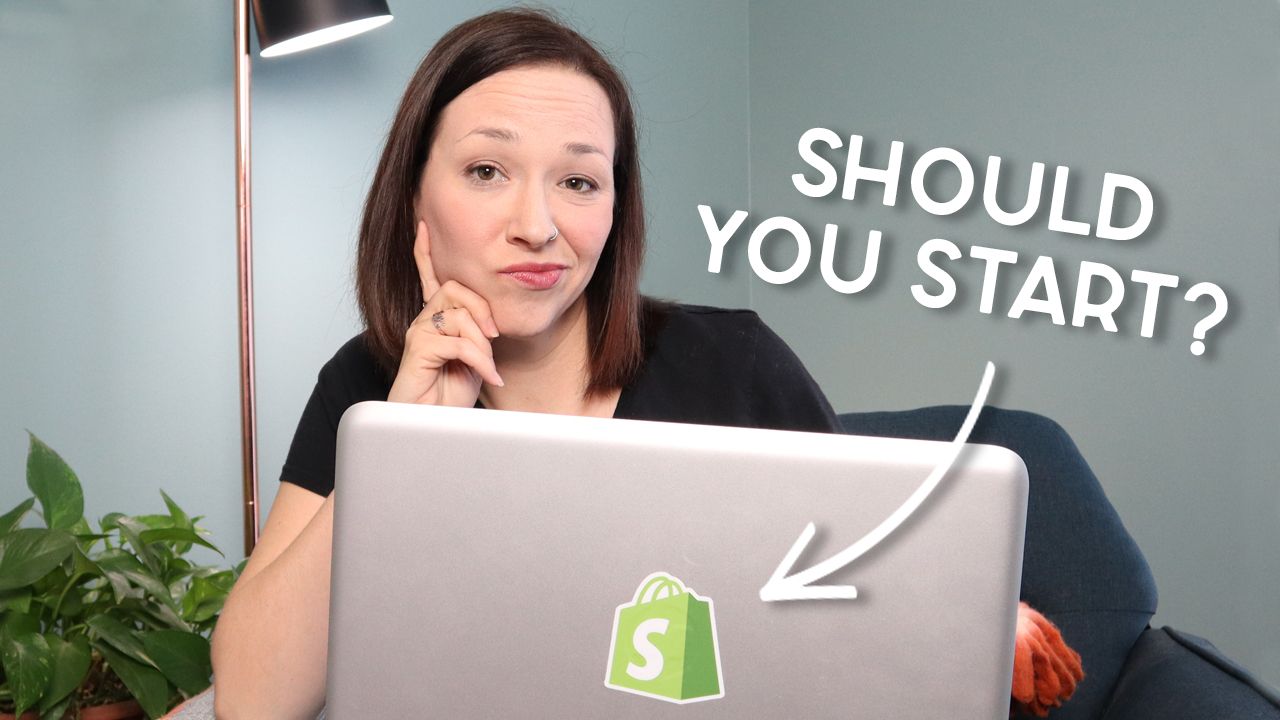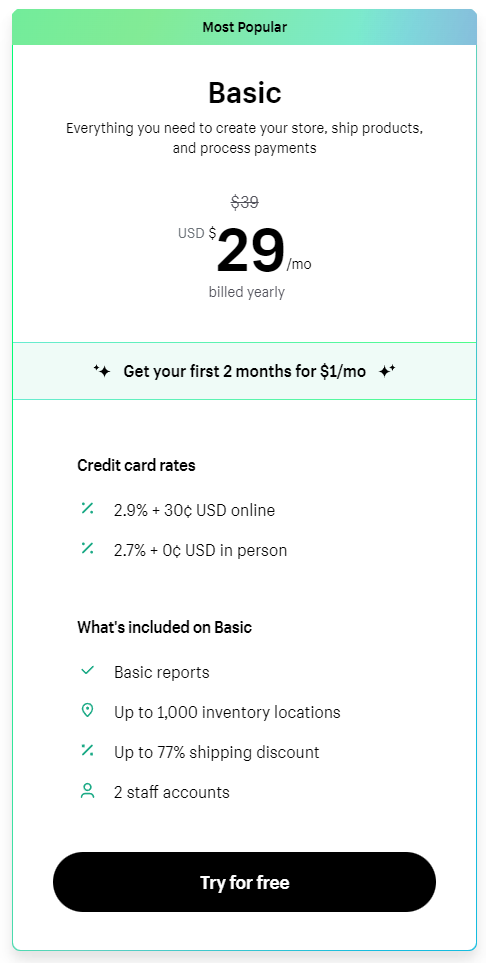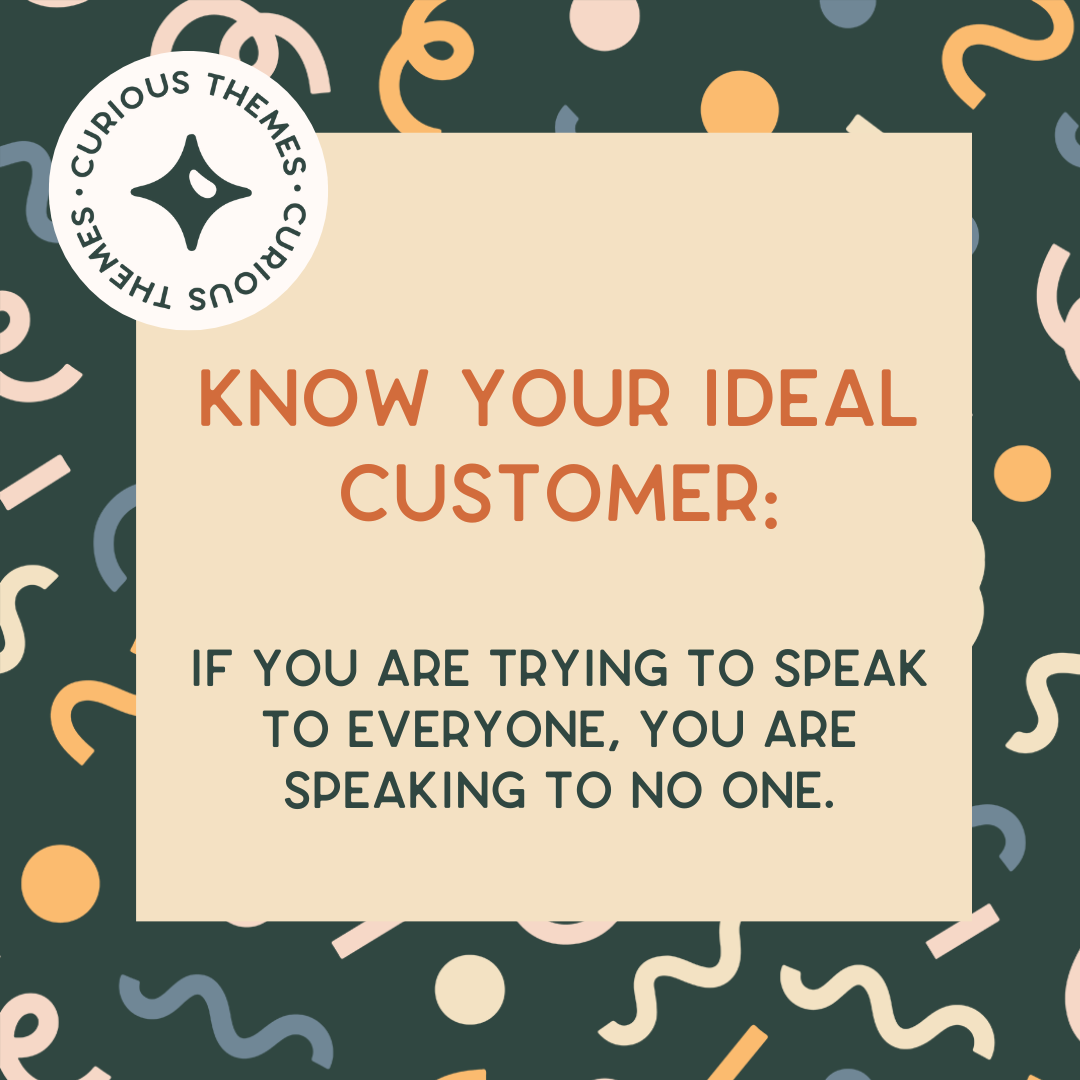
Creating a Shopify Store in 2023…the TRUTH
Let's talk about some of the common misconceptions about starting a Shopify store.
I started my first Shopify store in 2011, and I've been certified as a Shopify Expert since 2013.
So in this video, I wanna give you a very honest and realistic look at what it looks like to actually run a successful Shopify store in 2023.
Myth #1- Setup and Costs
So myth number one is that it's easy to get a store set up and you can do it with $0.
I see videos promoting this myth all the time on YouTube, and it kind of drives me crazy because yeah, sure, you can set up a Shopify store from beginning to end in a couple hours.
 Is it gonna look good or is it going to actually convert into sales? Mm, maybe not so much. Also, you can't really start a store with $0. First off, the Shopify basic plan costs $29 for a yearly subscription.
Is it gonna look good or is it going to actually convert into sales? Mm, maybe not so much. Also, you can't really start a store with $0. First off, the Shopify basic plan costs $29 for a yearly subscription.
Other Up-front Costs
- Domain for your Store
- Samples of whatever products you're trying to sell (you want to make sure that the quality is good)
- Shipping & Packaging Supplies
There's a lot of up-front costs that you're going to have to do, at least just testing out new products and getting your store set up from the very beginning.
So just know that you need to set some realistic expectations.
I'm all for done is better than perfect and you can just get started with what you have and a little additional time and resources, but know that it's going to take more time to actually work on this and continue scaling and building your brand.
TIP: Make sure that you are setting realistic expectations.
Sure, you can totally make a hundred thousand dollars in your first year of selling online with your Shopify store.
However, if this is your very first time or you're just getting started, or you still haven't figured out what products you're going to be selling yet, that may not be a good goal for you because it may be something that's going to just get you frustrated. Or you're going to work so hard to try and achieve that, that you're gonna just end up burning out and quitting.
You wanna make sure that you're setting those realistic goals. So that it keeps you motivated and excited to keep working on it because hopefully it's going to be a business that you can continue to grow year after year.
Myth #2- General Store
Myth number two is that it's okay to create a general store, and I really don't find that that's the case, especially now in 2023.
You really need to choose a niche for your store and a specific type of products that you're going to sell.
General stores were really popular in the early 2010s when dropshipping was really big.
However, that doesn't really work anymore, and you need to choose a niche for your business.
Why you Should Choose a Niche
Choosing a niche is really helpful because it lets you really zero in on who your ideal customer is and the messaging that's going to really resonate with them.
Plus you can carry similar products in your store for them as well. So there's a ton of different ways to go about researching a different type of niche for you.
I definitely recommend choosing a product or a topic for your store that you yourself are interested in, because then it keeps it more exciting for you as you're building out your business.
Think about the differences of either having golf, which is a pretty big niche, or disc golf, which is smaller. They both have very different audiences and very different audience size.

Golf is such a big overarching sport that I'm sure that there's a lot of people actually searching for these types of products that help them improve their golf game or golf apparel.
However, there's gonna be a lot more competition for that as well just because it's a bigger audience.
Bigger audience doesn't always mean just the best niche.
Think about your Niche's
- Audience Size
- Competition Size
- What the Competition is Doing
- How you Could Improve Upon It
TIP: There's a lot of different factors that come into play here, but I definitely recommend that you have an overall niche for your store and don't just try and do any random household products or just a general store.
Myth #3- Ideal Customer
Okay, next myth is that everyone is your ideal customer.
So many times when I ask people who their ideal customer is and they say, "Well, everyone can buy from me", this is a huge red flag because that's not the truth.
If you're actually trying to market to everyone, you're marketing to no one. You need to know exactly who your ideal customer is, and this really influences your design and your marketing on your site for your site.
Change these Elements to Speak to Your Ideal Customer Better
- Store Images & Branding Design
- Site Copy to Speak to their Goals or Fears
- Functionality & Promotional Offers Online
- Email Newsletter Promotion
- Answering Questions on the Product Page
Specifically, knowing exactly who your ideal customer is really helps you figure out the images and the design that are going to resonate the most with them.
 You can also then tailor your copy to speak to their needs or dreams or fears so that it really resonates with them and it makes them quickly hit the "Add to Cart" button.
You can also then tailor your copy to speak to their needs or dreams or fears so that it really resonates with them and it makes them quickly hit the "Add to Cart" button.
You also want to think through the functionality aspects of your store.
Is your ideal customer going to be more interested in a free shipping over a certain dollar amount because they're a price shopper or is a buy one get one free going to be more exciting for them? There are so many little aspects like this.
Also, knowing exactly who your ideal customer is can be really helpful when building out your email list, and that's something that you can promote on your store.
Of course, you can do a 10% off your order, which may work for more of a price focused shopper.
If you're giving something more of a benefit to that ideal customer because you know exactly who they are and you're creating some kind of a free guide or resource for them, that may be more exciting for them to actually give you their email address to get that versus just a 10% off their order.
Also, when you're building out your store design, you really want to think through about what kind of questions your ideal customer would have.
 Have those on the product page somewhere around the "Add to Cart" button so that way they don't have to leave and go anywhere else on your site.
Have those on the product page somewhere around the "Add to Cart" button so that way they don't have to leave and go anywhere else on your site.
You're answering all their questions that may lead to them actually leaving your site and you're answering them right there so that they feel safe purchasing from you.
It can also be helpful in knowing what kind of social proof really resonate with them as well. Are they going to be looking for reviews on your site? Testimonials?
TIP: Think through what is it that's going to make them feel more comfortable in actually purchasing from you?
Myth #4- Build it and they will come
Myth number four is build it and they will come.
I see so many times people say, "I just launched my Shopify store, but I'm not getting any sales".
And then I follow up and say, "Okay, well what's your plan on actually driving traffic to your store?" And that's where they seem to always have an issue.
You have to have a marketing plan and a strategy for how you're going to actually be sending traffic to your site. And it can't just be posting on social media once or twice a week.
Key Elements for a Marketing Strategy:
- Social Media
- Influencer Marketing
- Email Marketing
- Paid Advertising
You need to make sure that you have kind of a healthy mix of a couple different ways of traffic sources to get to your store.
Then plan for how you're going to be implementing your strategy: What kind of content are you going to be creating on these different sites? How are you going to be sending more traffic and awareness for your store?
 There's a lot of great ways to send organic free traffic to your site as well, not just social media.
There's a lot of great ways to send organic free traffic to your site as well, not just social media.
I actually created a separate video as well, all about how to send free traffic to your store and my favorite free ways of doing that.
Check out that video here for my favorite three traffic sources that are totally FREE: https://www.curiousthemes.com/blog/how-to-get-FREE-Shopify-Traffic-in-2023
Overall, you just need to make sure that you've got a realistic plan that works for your schedule, whether it's your side hustle or your full-time job, of how you can actually be creating content regularly and promoting your business online.
Myth #5- Takes No Time
Myth number five is that it doesn't take a lot of time to run a Shopify store.
So after you have it launched, I'm sorry to tell you, but it's actually still gonna take a lot of ongoing time to manage your store.
Ongoing Store Work
- Fulfilling Orders
- Customer Support
- Creating Content
- Creating New Products
- Monitoring Inventory Levels
- Ongoing Store Marketing
There's a lot of things that go into just managing the store once it's actually launched as well.
You need to be focusing on your growth and how you're going to be scaling your store moving forward.
So that means you need to know some really important key metrics and be tracking those daily, weekly, monthly for your store.
Key eCommerce Metrics to Track
- Average Order Value (AOV) for your cart
- Customer Lifetime Value (CLV)
- Typical Ad Spend per Day
- Gross Profit Margin
All these things, and more, you need to make sure that you're monitoring and that you're not just continually kind of stuck in the administrative side of their business. Instead make sure you are taking more of a CEO role.
 So if you wanna know more about those kind of important metrics that you need to be tracking on your store, check out a recent video that I did as well that goes through how to calculate these different formulas for these metrics. It also goes over how to figure out what kind of budget you need to do for your paid advertising so that you're still profitable as well.
So if you wanna know more about those kind of important metrics that you need to be tracking on your store, check out a recent video that I did as well that goes through how to calculate these different formulas for these metrics. It also goes over how to figure out what kind of budget you need to do for your paid advertising so that you're still profitable as well.
So let's be honest, lots of online stores are gonna fail, and that's because they don't actually have a proper plan or strategy in place.
They think that it's just gonna be super easy to launch an online store and then just kind of sit back and let the money roll in.
However, if you are committed to growing an online business and focusing the time and effort needed into growing your online store, you can be really profitable and have it be a very successful business for you for years to come.
So don't lose hope, don't lose focus, and just know that you need to have these certain things in place to have a successful store over the long haul.
Next Steps
Okay, so if you've already launched your Shopify store and you're not quite seeing the sales that you expected, then check out this video here where I talk about some different reasons why your store may not be making sales and six quick fixes that you can do on your store today to actually increase your sales.
And if you wanna see more about my 2023 eCommerce Trends and what I'm predicting for Shopify and eCommerce overall this year, then check out this video over here: https://youtu.be/kZWgT2szL4c
If you are interested in launching and growing your Shopify store for the year, make sure you also subscribe to my YouTube Channel because I put out new videos, tips, and tutorials all about Shopify every week.




